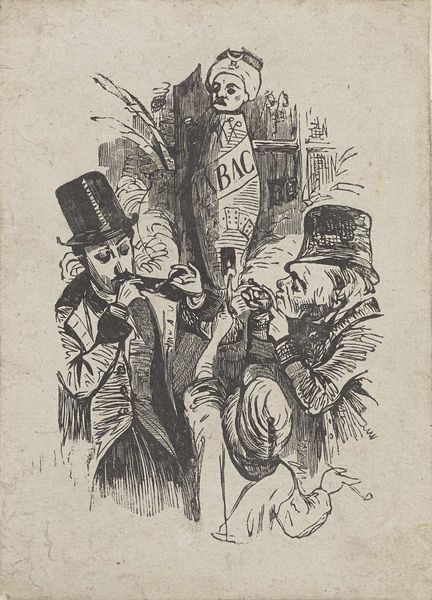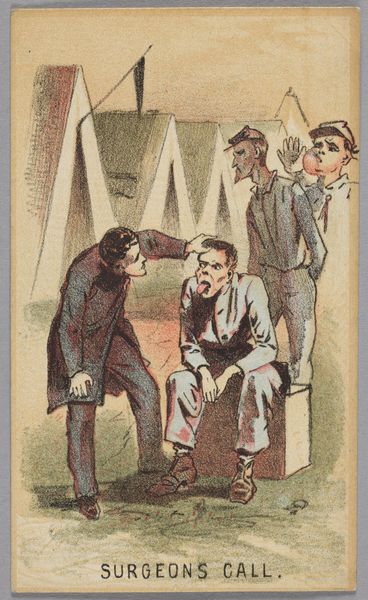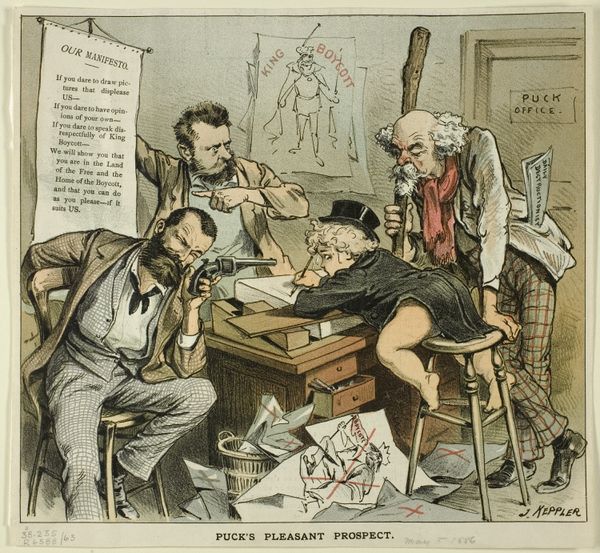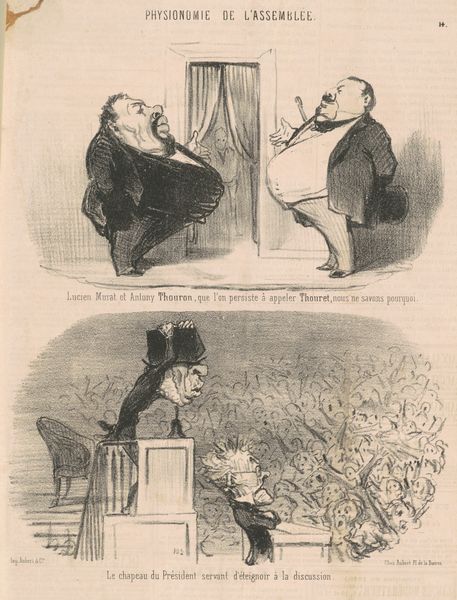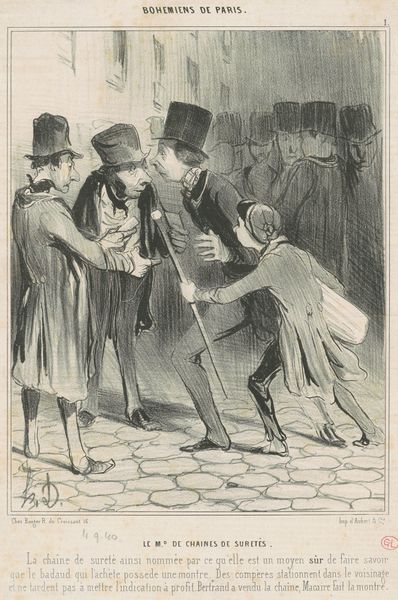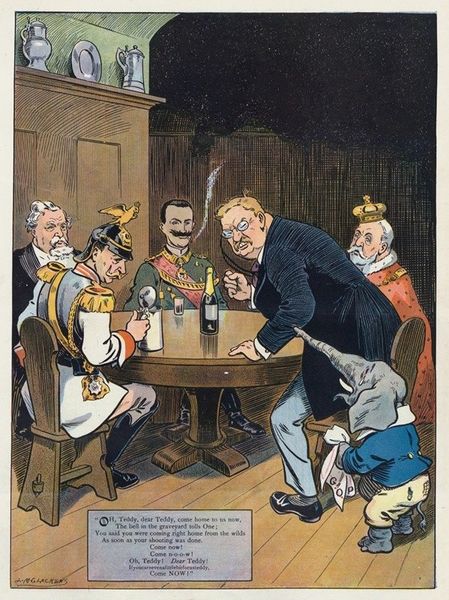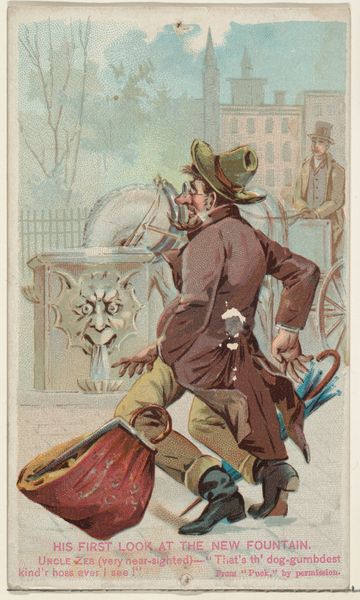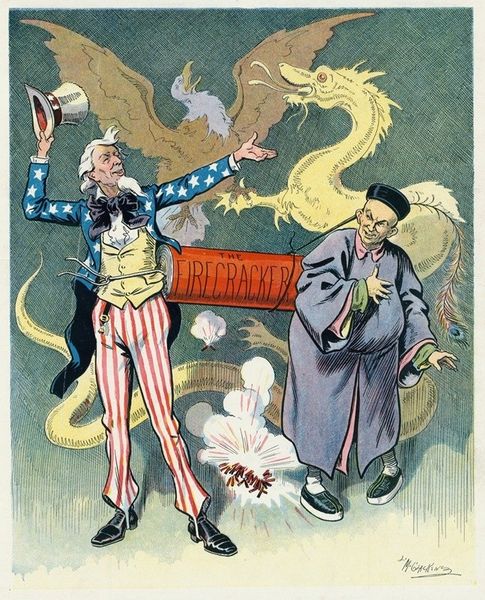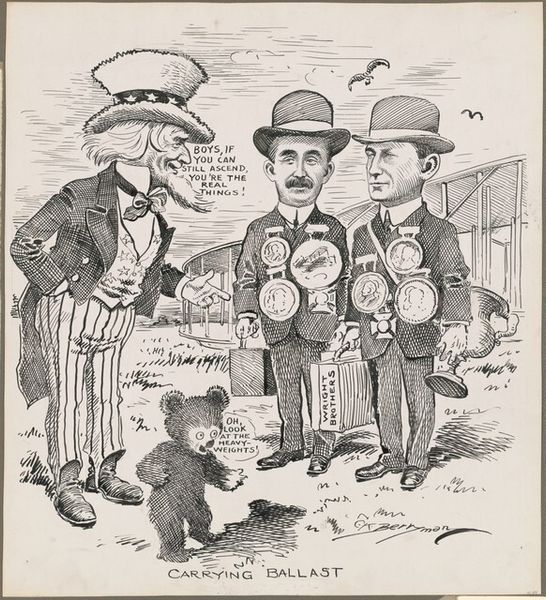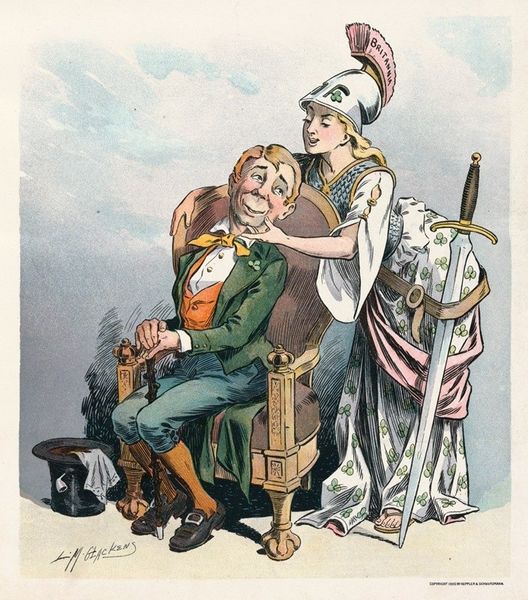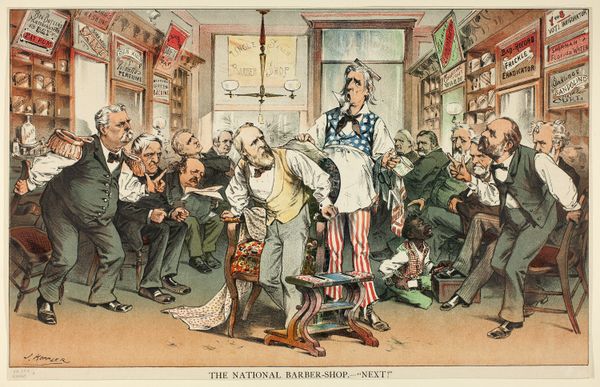
print, ink
#
art-nouveau
# print
#
caricature
#
caricature
#
ink
Copyright: Public Domain: Artvee
Curator: This piece is titled "The Morning After," created in 1913 by Louis Glackens, a commentary crafted using ink as a medium. The print feels… cacophonous, wouldn't you agree? There's so much going on. Editor: Chaos. That’s my first impression. A hangover scene depicted through these allegorical figures. I see the remnants of celebration, flowers, scattered shoes, a drunken figure slumped on the floor wearing "The Trust Question" label and another figure wearing “currency question” as a hat. Who threw this party, and why is everything made of symbols and political debate? Curator: Well, considering Glackens's era, Progressivism was cresting, with Woodrow Wilson ascending to power. "The Morning After" serves as a critique of Wilson’s initial policy challenges—specifically currency reform, trust-busting, and relations with Mexico. You see these ideas given form, almost caricatured, on figures placed as debris strewn across a floor, perhaps echoing the sense of legislative detritus after the celebrations die down. Editor: Look at how Glackens utilizes the texture of the ink. See how Wilson, with his “Wilson” card on his jacket, is brushing gold dust away, ostensibly ‘cleaning up’—note the ironic use of ‘cleaning’ in scare quotes. Is it real gold? Or, like political promises, simply dust and show? How might access to quality inks and print processes during that era have affected the artist's ability to convey these social commentaries to a wider audience? Curator: Interesting perspective on materiality—yes, I find myself pondering what his audience thought. Here Glackens leverages caricature to present complex issues in a digestible visual form. What do you imagine the average viewer would think of Wilson's clean up efforts? Did they consider his role active or passive, effective or failing? What materials did other artists utilize to deliver messaging like this? Were all messages as nuanced as this, and were nuanced critiques delivered at the risk of obscuring understanding for the greater audience? Editor: Indeed, how did these printed images become tools in the public perception and debate? And were the tools always evenly distributed and equitably utilized? Looking again, the choice of print itself – readily mass-produced and distributed, making political commentary easily available to a wide segment of society – serves to heighten the role that the material conditions of the time had in shaping both political policy and opinions. Curator: These are excellent questions that highlight how intertwined social issues are with representation in visual form. The art doesn’t just exist—it’s enmeshed within complex political realities. Editor: Absolutely. It’s always worth peeling back to understand who made it, how they made it, and what it truly costs.
Comments
No comments
Be the first to comment and join the conversation on the ultimate creative platform.
